- English
- বাংলা
Table of Contents
This is an old revision of the document!
Space, time and motion
1. Coordinate systems
In order locate an astronomical object, we need to define a coordinate systems. The most widely used system is the spherical coordinate system $(r,\theta,\phi)$ related to the Cartesian coordinate system $(x,y,z)$. We basically need 4 steps to define such a system:
- Origin: the center of the Earth, Sun or our Galaxy.
- Fundamental plane: the $x-y$ plane, plane of the Earth’s equator, the solar system or the Galaxy.
- Fundamental direction: direction of the positive $x$-axis, e. g. the direction from the Sun to the Galactic center.
- Sign convention: convention for the signs of $y-$ and $z$-axes.

The fourth step can give rise to either a left-handed (left panel above) or a right-handed (right panel) system. In the right-handed system, the right hand is used to determine the direction of positive $\phi$ and $\theta$ from the $x$- and $z$-axis, respectively. In the left-handed system, the left hand is used to determine the direction of positive $\lambda$ and $\xi$ from the $x$- and $z$-axis, respectively.
For a Cartesian system, the distance between any two points is given by Pythagoras’ theorem:
$$ d = \sqrt{x^2+y^2+z^2}. $$
If we are mainly interested in defining positions on a spherical surface, we seldom need the $r$ coordinate which is basically the distance of an object from the center of the Earth. Let us focus on the surface for now.

A great circle is the circle created by the intersection of the surface and a plane passing through the center. A small circle is created when the plane does not pass through the center. A distance on the surface is an arc of a great circle. The sides of a spherical triangle on the surface are arcs of three different great circles and such a triangle follows some rules. The law of cosines says
$$ \cos a = \cos b \cos c + \sin b \sin c \cos A $$
$$ \cos A = \cos B \cos C + \sin B \sin C \cos a $$
and the law of sines says
$$ \frac{\sin a}{\sin A} = \frac{\sin b}{\sin B} = \frac{\sin c}{\sin C} $$
where $A,B,C$ are the angles and $a,b,c$ are the sides opposite to the angles.
1.1 Latitude-longitude system

In the terrestrial coordinate system, i. e. the latitude-longitude system, we define the center of the Earth as the origin, the equatorial plane of the Earth as the fundamental plane, the direction from the center of the Earth to the prime meridian as the positive $x$-axis, and then we use the left hand to define the direction of positive longitude $\lambda$ from the prime meridian, and the direction of positive latitude $\beta$ from the equatorial plane. Great circles perpendicular to the equator are called meridians and they pass both the north and south poles. The meridian passing through the Greenwich Observatory (UK) $G$ is the prime meridian.
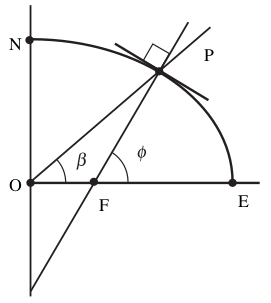
The geocentric latitude $\beta$ is different from the geodetic latitude $\phi$ as shown above. In the geodetic system, the latitude is defined a line that is perpendicular to the actual spheroid (ellipsoid of revolution) that the Earth actually is. Here the line $PF$ is perpendicular to the spheroidal surface of the Earth and points toward the gravitational force toward the center. GPS uses the geodetic system. There is one more latitude, the geographic latitude which is the angle between the local vertical and the equator which might not be the same as the geocentric or the geodetic latitude.
Planetary scientists or planetologists define latitude-longitude system for other planets as well using a distinguishing mark on its surface to establish the prime meridian. In any planet, the north pole is defined as the pole that is north of the ecliptic, the plane containing the Earth’s orbit.
1.2 Altitude-azimuth system

A system defined with respect to the horizon of an observer on the surface of the Earth. The location of the observer is the origin $O$, the fundamental plane is the horizontal plane which is tangent to the spherical earth at point $O$ and intersects the celestial horizon at points NEWS. Vertical circles are perpendicular to the horizon and pass through the zenith ($T$) and nadir. The vertical circle intersecting NTS is the observer’s meridian. The fundamental direction is from $O$ to $N$.
A point on the sky $P$ has two coordinates: altitude or elevation $e$ or $\angle QOP$ and azimuth $a$ $\angle NOQ$. Astronomers sometimes use the zenith angle $z$ instead of altitude.
Stars, planets, the sun and the moon all go though a diurnal motion in this coordinate system. Stars take 23 hours 56 minutes 4.1 seconds between two successive meridian crossings. This duration is called the sidereal day. The sidereal day is getting longer by 0.0015 seconds every century as the spin of the Earth is slowing down.
1.3 Equatorial system
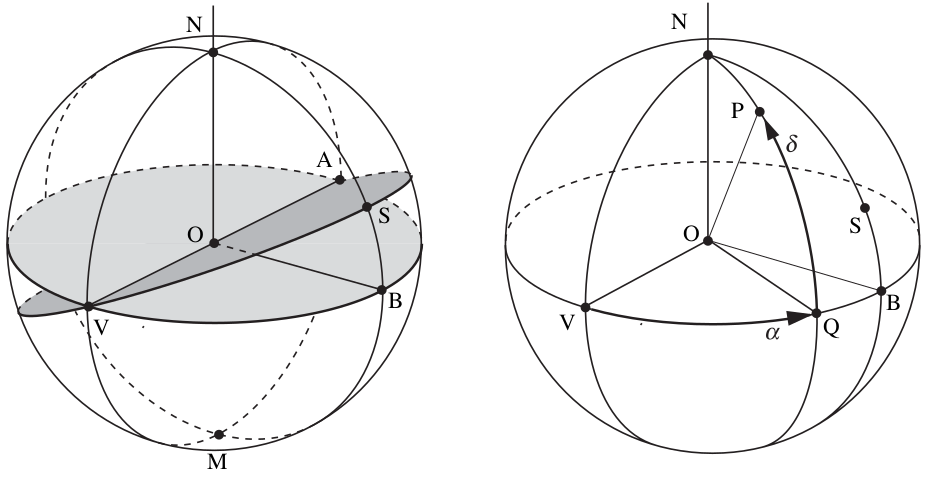
In the equatorial system, the center of the Earth is the origin $O$ and the equator is the fundamental plane making the $z$-axis parallel to the rotational axis and directly relating the celestial poles (N and M) with the terrestrial ones. The great circle created by the intersection of the fundamental plane and the celestial sphere is the celestial equator VBA. The latitude-like angles from the equator is called the declination $\delta$.
The sun traces a great circle in the celestial sphere called the ecliptic VSA which intersects the celestial equator at an angle $\epsilon=23.5$ degrees called the obliquity of the ecliptic. The point that the sun crosses going from south to north is is called the March equinox V and the direction from the center to the equinox OV is the reference direction of this system. The right ascension (RA) $\alpha$ is measured in the equatorial plane from west to east as shown in the right-handed system (right panel) above.
RA is measured in hours-minutes-seconds whereas DEC is measured in degrees-arcminutes-arcseconds. Note that ‘minute’ is a unit of time whereas ‘arcminute’ is a pseudo-unit of angle.
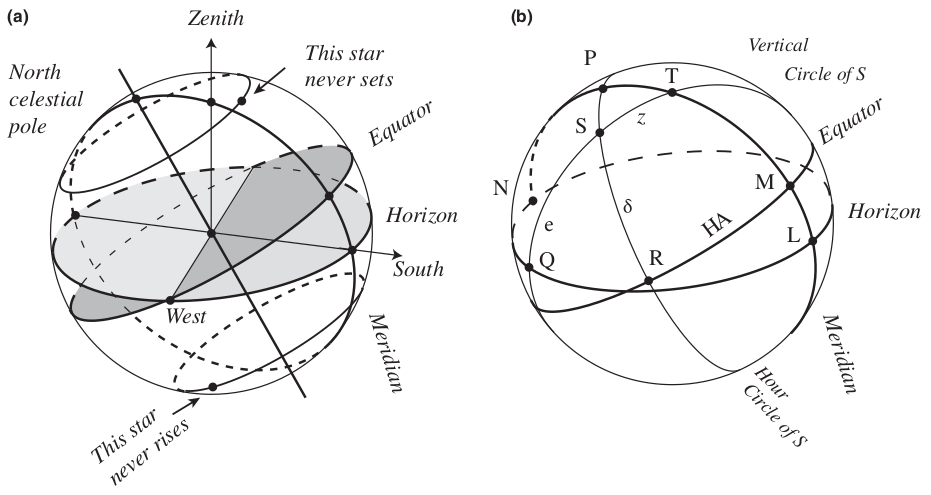
The relation between the equatorial and horizon systems is shown above. It assumes an observer located at a latitude of $60$ degrees north on Earth. Both spheres show the horizon, equator and observer’s meridian, the north celestial pole P and the zenith T. Panel (a) shows the diurnal path of a circumpolar star that never sets and the path of a star that never rises for the observer at the center of the horizon.
Altitude of NCP = Geodetic latitude of observer.
Object HA = Meridian RA - Object RA
Sidereal day = Time between upper meridian transits of the March equinox
Sidereal time = Object RA on the upper meridian
Object HA = Sidereal time now - sidereal time when the object culminates
Measuring RA-DEC
Transit telescope / Meridian circle
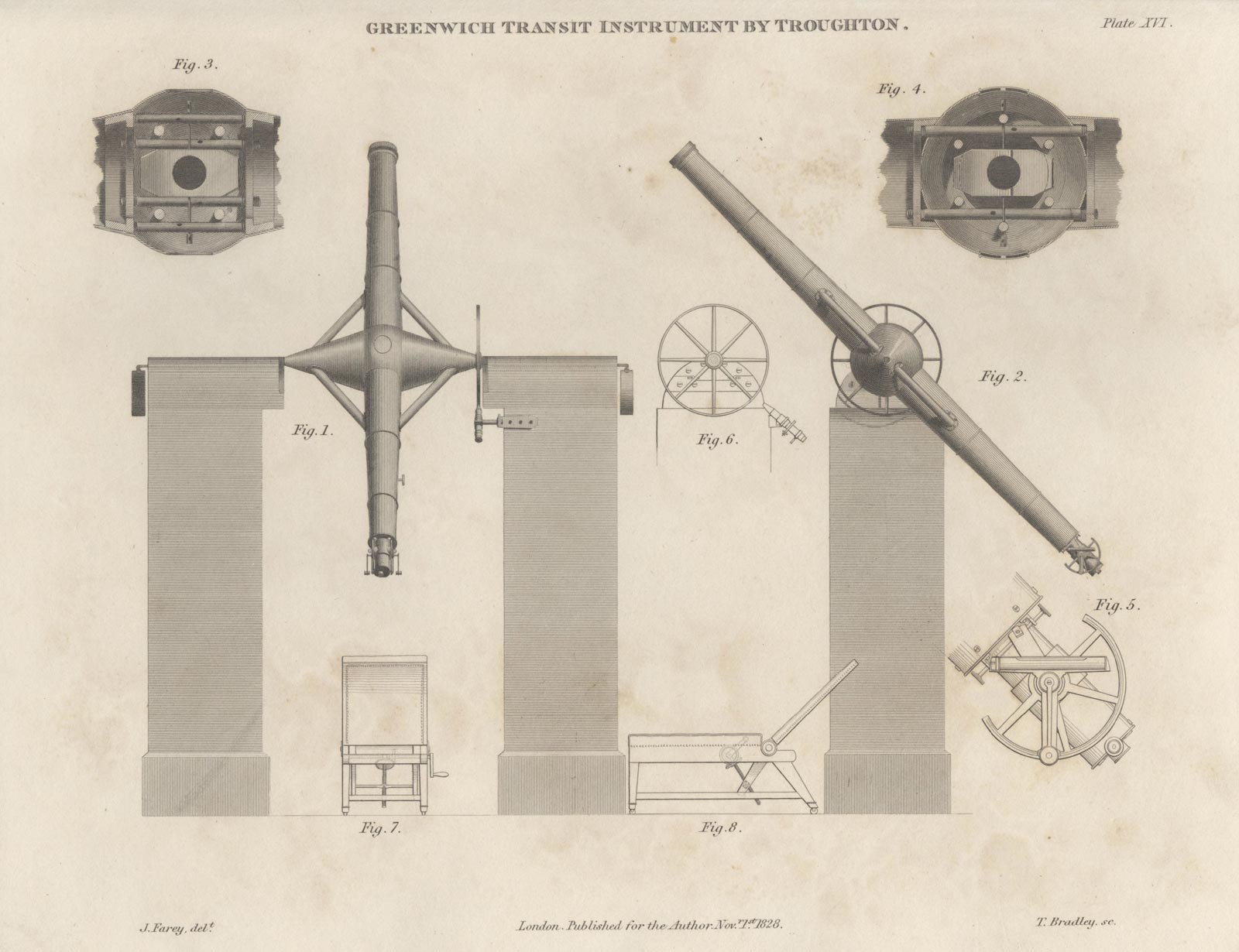

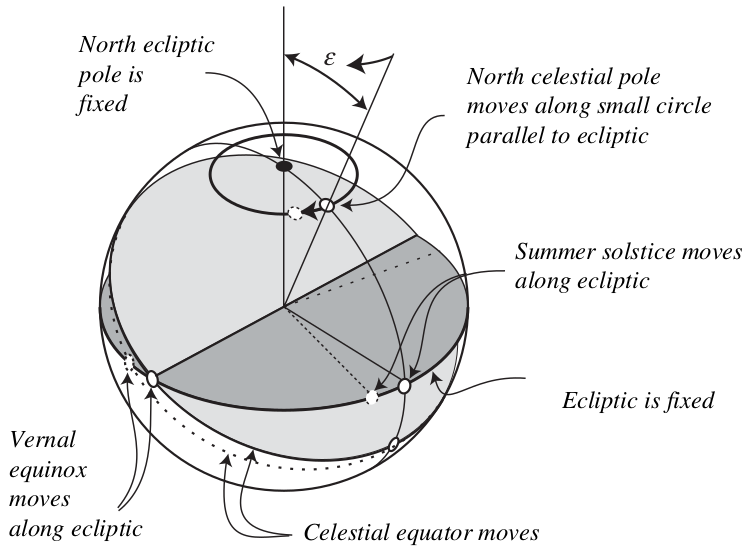
Celestial equator moves wesward toward ecliptic at a rate of $5029.097$ arcsec (1.4 deg) per century.
Around 4500 years ago, Thuban was the pole star.
After 12,000 years, Vega will be the pole star.
Unlike the lunisolar precession, planetary precession causes the obliquity to decrease by $47$ arcsec per century.
Ecliptic
North ecliptic pole, NEP: RA 18 hours, Dec = $90^\circ-\epsilon$ where $\epsilon$ is the obliquity of the ecliptic.
Galactic
North Galactic pole, NGP: $\alpha = 12:49:00$, $\delta=+27.4^\circ$ (equator and equinox of 1950)
ICRS
International Celestial Reference System where the barycenter is the origin.
Equator defines the fundamental plane, but the poles and axis are determined by distant quasars creating an inertial reference frame.
HIPPARCOS measured ICRS coordinates of 100k stars. Gaia more.
2. Distance measures
The position of Alpha Centauri is uncertain in ICRS by only 0.4 mas (milli-arcsec), i. e. by only 3 parts in $10^9$ of a full circle, but its distance is uncertain by one part in 2500.
ICRS-defining quasars have positional uncertainty of only 0.02 mas, but distance uncertainty of almost 10%.
2.1 Astronomical Unit (AU)
Semimajor axis of planetary orbits
$$ a = P^{2/3} $$
where $a$ is measured in AU, and $P$ the period in years.
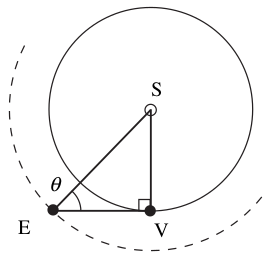
$$ 1 \text{ au } = \frac{c\Delta t}{2\cos\theta} = 149.5978 \text{ Gm} \pm 1 \mu\text{m}$$
where $\Delta t$ is the time it takes for a radio signal to come back to earth after getting reflected from Venus.
2.2 Stellar parallax


The tangent of the parallactic angle
$$ \tan p = \frac{a}{r} $$
where $r$ is the distance to the object and $a$ is in au. For $p\ll 1$ we can approximate $\tan p = \sin p = p$ and
$$ p = \frac{a}{r}. $$
If $a$ is in au and $p$ in arcsec, then $r$ is in parsec.
1 parsec = 206265 au = $3.085678\times 10^{16}$ m = 3.261633 ly.
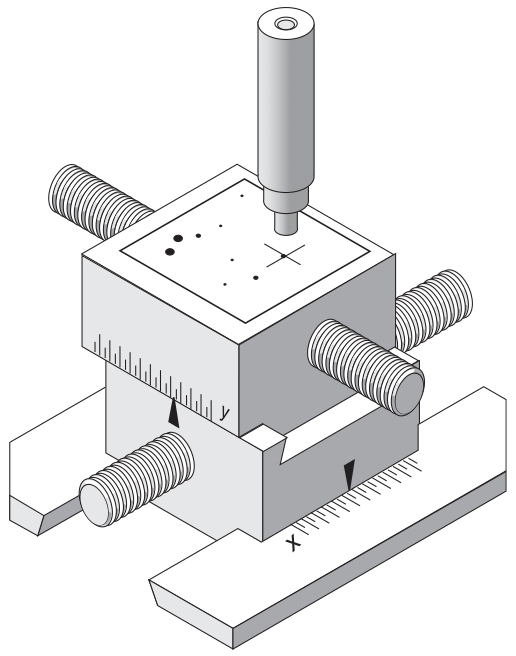
For nearby star, measurements of $p$ have uncertainties of 50 mas, but can be reduced to 5 mas. Only works for around 1000 stars closer than 20 pc.
HIPPARCOS has parallax uncertainties of 0.97 mas for around 118k stars brighter than $m_V=8.0$.
Explore Gaia: https://www.esa.int/Science_Exploration/Space_Science/Gaia
3. Time
TAI: International Atomic Time:
1 s = 9,192,631,770 periods of of the radiation corresponding to the transition between the two hyperfine levels of the ground state of the cesium-133 atom.
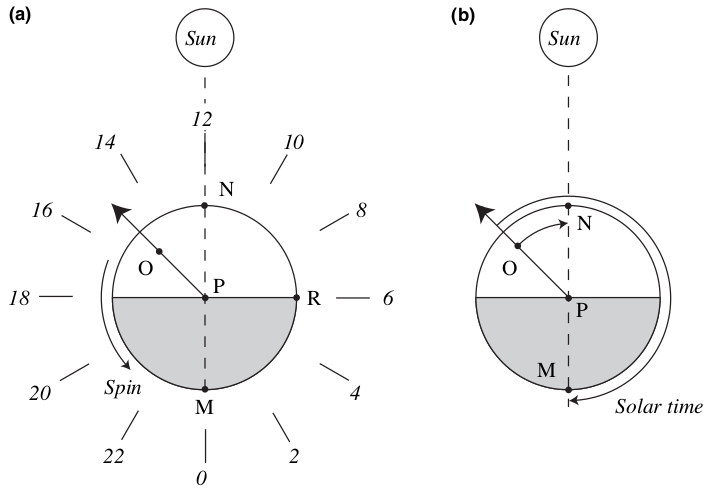
Local apparent solar time = HA of the Sun + 12 hrs.
Local mean solar time = HA of the mean Sun + 12 hrs.
Equation of time = local apparent solar time 2 local mean solar time.
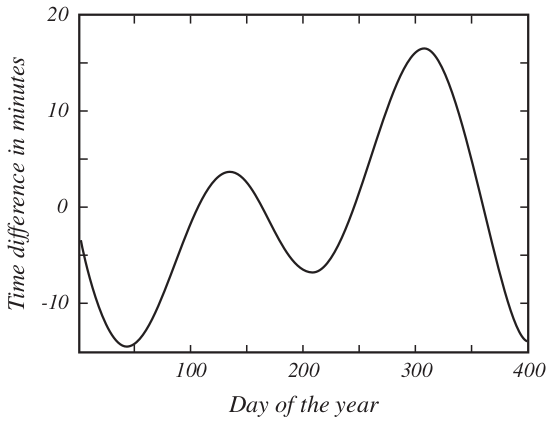
Universal tine, UT = mean solar time at Greenwich.
UTC uses SI seconds.
